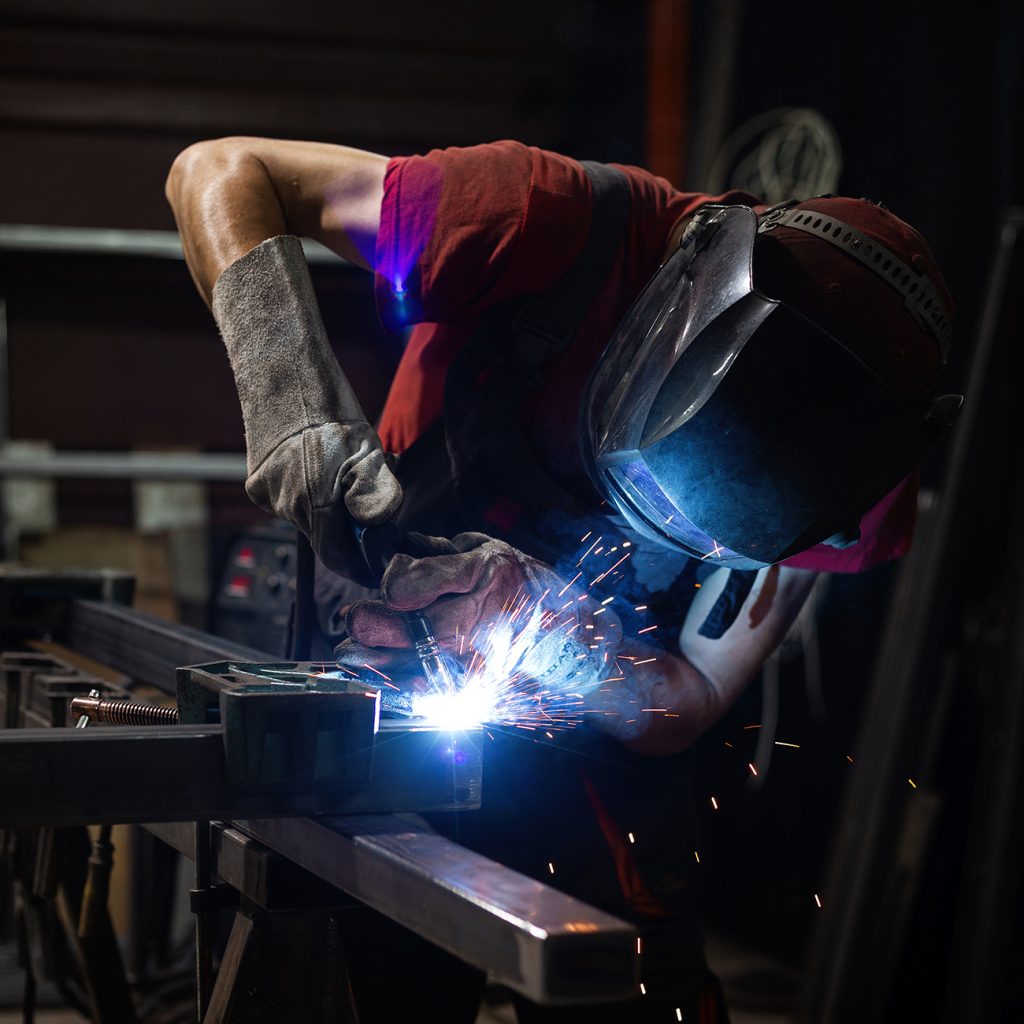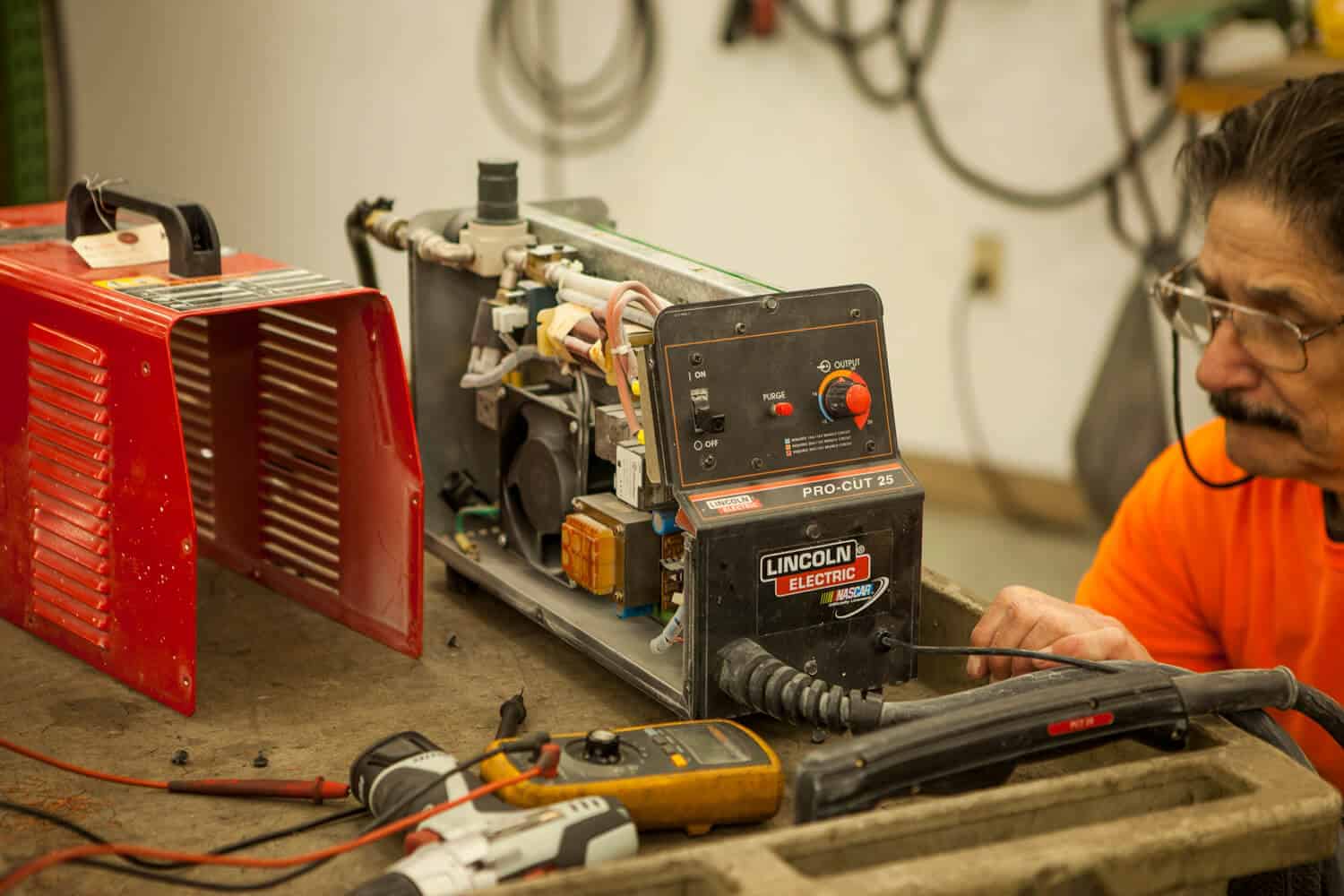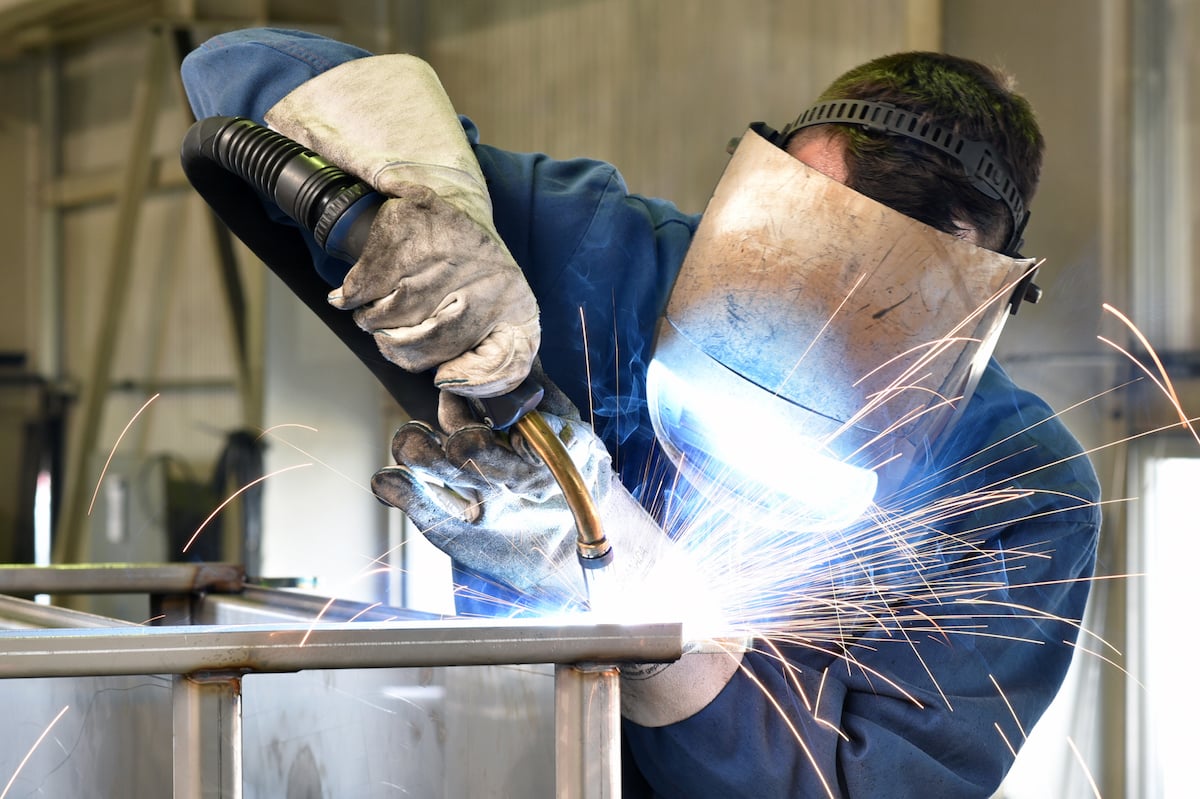Common Welding Repair Issues and Exactly How to Address Them Successfully
Welding repair services often encounter a range of concerns that can jeopardize the honesty of the last product. Usual issues include insufficient infiltration, porosity, and misalignment, to name a few. Each flaw provides special difficulties that require particular strategies for resolution. Comprehending these issues is vital for welders intending to enhance their end results and abilities. This discussion will certainly discover these common welding repair problems and efficient methods to resolve them.
Poor Penetration
Poor penetration occurs when the weld steel falls short to completely fuse with the base material, resulting in weak joints and possible architectural failures. This issue commonly comes from insufficient warm input, wrong electrode angle, or inappropriate welding speed. Welders may experience poor infiltration because of a mistake of the required criteria for a specific material density or kind. In addition, contamination on the base material's surface area can impede effective bonding, worsening the problem. To deal with poor penetration, welders should assure ideal setups on their devices and maintain a tidy job surface area. Routine evaluation of welds is suggested to determine any deficiencies early, enabling timely modifications and the avoidance of compromised structural integrity in welded assemblies.
Porosity
Porosity is an usual problem in welded joints that materializes as little gas bubbles trapped within the weld metal. This flaw can endanger the honesty of the weld, resulting in lowered stamina and prospective failing under stress. Montana Mobile Welding and Repair Welding. Porosity commonly emerges from contamination, moisture, or inappropriate welding strategies, which permit gases to run away into the liquified weld swimming pool. To attend to porosity, welders should guarantee appropriate surface area preparation, preserve a clean workplace, and make use of suitable welding specifications. Additionally, selecting the appropriate filler material and protecting gas can mitigate gas entrapment. Regular examination and testing of welds can assist recognize porosity early, assuring prompt rehabilitative activities are taken, therefore preserving the high quality and integrity of the bonded structure
Imbalance
Misalignment in welding can develop from numerous aspects, including incorrect arrangement and thermal growth. Recognizing the origin is necessary for efficient resolution. Several improvement methods are readily available to straighten elements and guarantee architectural integrity.
Reasons for Misalignment
Welding imbalance typically stems from a variety of underlying issues that can compromise structural integrity. One primary cause is incorrect fit-up of elements before welding, which can cause voids and irregular surface areas. Variants in thermal expansion during the welding procedure can also result in distortion, particularly if the products being joined have different coefficients of expansion. Additionally, inadequate fixturing and clamping may fail to hold components safely in position, causing movement throughout welding. Badly conserved tools, consisting of welding makers and devices, might introduce inconsistencies in the weld bead, further adding to imbalance. Operator mistake, stemming from not enough training or experience, can likewise play a considerable function in developing misaligned welds.

Adjustment Techniques Offered
Addressing imbalance properly calls for a mix of restorative methods tailored to the particular concerns available. One common technique is the usage of jigs or components to hold parts in the proper position during welding, making certain consistent positioning. Furthermore, pre-heating the products can help lower distortion and boost fit-up. For considerable imbalance, mechanical adjustment methods, such as making use of hydraulic jacks or clamps, can be employed to correct the setting before welding. Post-weld heat treatment might additionally be necessary to alleviate stresses created by misalignment. Finally, cautious assessment and modification throughout the configuration phase can stop misalignment problems from coming to be substantial troubles, advertising a smoother welding procedure and enhancing total structural integrity.
Distortion
Distortion is a common challenge in welding that can arise from different aspects, including unequal cooling and heating. Understanding the reasons for distortion is necessary for carrying out reliable prevention methods. Resolving this problem not just improves structural stability but additionally boosts the total high quality of the weld.
Reasons for Distortion
When subjected to the extreme heat of welding, materials usually undergo changes that can bring about distortion. This phenomenon primarily emerges from thermal growth and contraction throughout the welding procedure. As the weld area warms up, the product expands; upon air conditioning, it acquires, which can create interior stress and anxieties. Furthermore, irregular heating across a work surface can aggravate these tensions, resulting in warping or bending. The sort of product additionally plays a considerable function; steels with varying thermal conductivity and coefficients of expansion might react in different ways, leading to unforeseeable distortions. Inadequate joint layout and insufficient fixturing can add to misalignment during welding, enhancing the chance of distortion. Comprehending these reasons is necessary for reliable welding repair work and avoidance methods.
Avoidance Techniques
Reliable prevention methods for distortion during welding concentrate on controlling heat input and making sure proper joint design. Maintaining a consistent heat input aids to reduce thermal expansion and tightening, which can lead to distortion. Utilizing methods such as preheating the workpiece can also lower the temperature slope, promoting consistent home heating. In addition, selecting proper joint layouts, such as T-joints or lap joints, can boost stability and reduce anxiety concentrations. Executing appropriate fixturing to safeguard the workpieces in position additionally help in maintaining alignment during the welding process. Ultimately, staggered welding sequences can distribute warmth a lot more equally, protecting against localized distortion. By using these approaches, welders can considerably reduce the chance of distortion and improve the general top quality of their welds.
Breaking
Fracturing is a common issue experienced in welding repair services, often resulting from different aspects such as inappropriate you can try these out air conditioning rates, material look at here option, or insufficient joint preparation. The incident of splits can significantly jeopardize the honesty of the weld, causing prospective failings during procedure. To address this concern, welders need to first assess the source, making certain that materials work and appropriately picked for the certain application. Furthermore, regulating the cooling price throughout the welding procedure is important; fast cooling can generate anxiety and lead to breaking. Appropriate joint layout and prep work also add to decreasing the risk. Executing these strategies can improve weld high quality and resilience, eventually decreasing the chance of splitting in completed weldments.

Incomplete Combination
A significant concern in welding repair services is insufficient blend, which takes place when the weld metal does not sufficiently bond with the base product or previous weld passes - Fabrication. This defect can bring about weak points in the joint, potentially jeopardizing the stability of the welded framework. Factors adding to insufficient blend include not enough warmth input, improper welding method, and contamination of the surfaces being joined. To resolve this problem efficiently, welders need to assure appropriate pre-weld cleansing and surface area preparation, along with adjust their welding parameters to achieve appropriate infiltration and fusion. Routine examination throughout the welding procedure can additionally aid recognize insufficient blend early, enabling timely restorative procedures to boost the general quality of the weld
Overheating
While welding repair services can boost structural stability, overheating provides a considerable challenge that can lead to material degradation. Extreme warm throughout welding can modify the mechanical buildings of metals, resulting in decreased toughness, raised brittleness, and bending. This phenomenon is specifically important in high-stress applications where architectural reliability is extremely important. Recognizing getting too hot can involve visual inspections for staining or distortion, as well as keeping track of temperature throughout the welding procedure. To reduce the find out here risks related to overheating, welders need to employ ideal methods, such as controlling warm input, adjusting travel speed, and using suitable filler materials. Additionally, carrying out pre- and post-weld warm therapies can assist restore material properties and enhance the total quality of the repair, making sure lasting performance and safety.
Regularly Asked Concerns
What Are the Usual Signs of a Welding Defect?

Exactly How Can I Examine My Welds for Top quality?
To check welds for top quality, one can make use of aesthetic inspections, ultrasonic testing, and radiographic approaches. Each method ensures architectural integrity, recognizes defects, and verifies adherence to defined standards, ultimately enhancing the dependability of the bonded joints.
What Safety Safety Measures Should I Take While Welding?
When welding, one must focus on security by wearing appropriate personal safety devices, making certain proper ventilation, protecting combustible products away, preserving a tidy workspace, and recognizing environments to avoid injuries and crashes.
Can I Fix a Weld Without Remodeling the Entire Joint?
Repairing a weld without redoing the entire joint is possible, depending upon the damage (Montana Mobile Welding and Repair Belgrade). Methods such as grinding, including filler material, or using a welding procedure can successfully attend to specific defects while preserving the surrounding framework
What Equipment Are Vital for Effective Welding Repairs?
Essential tools for efficient welding repairs consist of a welding device, cable brush, grinder, protective gear, clamps, and filler products. Each device plays an important function in guaranteeing quality and safety during the repair service procedure. Porosity usually emerges from contamination, wetness, or improper welding strategies, which allow gases to run away into the molten weld pool. Badly conserved equipment, including welding equipments and devices, might present inconsistencies in the weld grain, more adding to imbalance. When subjected to the extreme warmth of welding, products frequently undertake changes that can lead to distortion. Fracturing is a common problem run into in welding repair work, commonly resulting from numerous variables such as inappropriate cooling rates, product selection, or inadequate joint preparation. A substantial concern in welding repair services is insufficient combination, which takes place when the weld steel does not properly bond with the base material or previous weld passes.